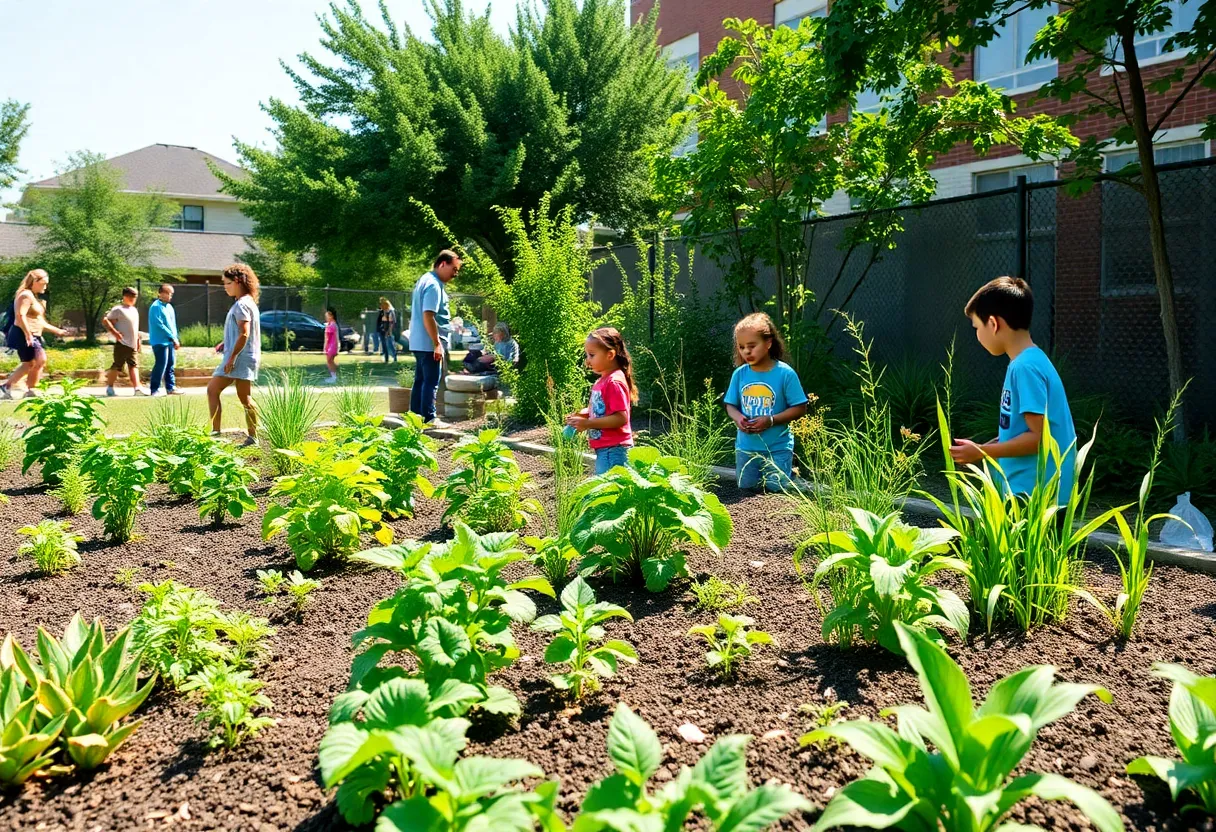Building a Sustainable School Garden: A Step-by-Step Guide for Houston Educators
Assessing Your School’s Needs and Resources
Effective planning begins with a clear assessment of your school’s unique requirements and available assets. This initial phase is vital for creating a garden that is sustainable, educational, and engaging. Consider evaluating the following key elements:
- Available Space: Identify open, accessible areas on the school grounds that can accommodate planting beds or containers. Consider whether space is shaded or sunlit, and if pathways are needed for maintenance.
- Sunlight Exposure: Determine which areas receive adequate sunlight, typically six or more hours daily, to support healthy plant growth. Observe seasonal changes in sunlight patterns.
- Water Access: Confirm proximity to water sources such as outdoor spigots, rain barrels, or irrigation systems. Reliable water access ensures consistent care and reduces logistical challenges.
- Soil Quality: Conduct soil testing to assess pH levels, nutrient content, and contamination risks. If soil is poor or contaminated, plan to install raised beds or amend soil accordingly.
- Community Support: Gauge enthusiasm among students, staff, and parents. Securing active participation early builds a strong foundation for ongoing maintenance and project sustainability.
Engaging stakeholders during this phase fosters a sense of ownership and aligns resources with your vision. Document your findings to guide subsequent planning stages.
Designing the Garden Layout
A strategic layout enhances both aesthetic appeal and functionality. Consider these core components:
Garden Beds
Determine the type, number, and size of beds based on available space and educational goals. Incorporate raised beds for improved soil control and accessibility.
Pathways and Accessibility
Design pathways that facilitate movement, maintenance, and adapt to diverse mobility needs. Use permeable materials like mulch, gravel, or pavers to minimize environmental impact.
Companion Planting and Biodiversity
Arrange plants thoughtfully to promote pollination, natural pest control, and crop diversity. Planting marigolds with vegetables or attracting native pollinators through native flora enhances ecosystem balance.
Native Plants
Prioritize indigenous species that naturally thrive in Houston’s climate. Native plants require less water and maintenance, support local wildlife, and serve as excellent educational tools about regional ecology.
Structural layout plans should incorporate seasonal considerations, ensuring year-round productivity and visual interest.
Preparing the Soil
Healthy soil underpins robust plant growth. Emphasize organic methods to improve soil conditions sustainably:
- Soil Testing: Use DIY testing kits or professional services to analyze pH and nutrient levels. Results guide targeted amendments.
- Organic Amendments: Incorporate compost, aged manure, or other organic matter to enhance fertility, structure, and microbial activity. Composting kitchen scraps and yard waste on-site reinforces sustainability.
- Mulching: Apply a layer of organic mulch such as straw, bark, or leaf litter around plants. Mulch conserves moisture, suppresses weeds, and adds organic matter over time.
Consistent soil management improves plant health and reduces the need for chemical fertilizers.
Selecting Appropriate Plants
Choose plants suited to Houston’s hot, humid climate and growing seasons:
- Vegetables: Prioritize heat-tolerant varieties like tomatoes, peppers, eggplants, and southern-specific crops such as okra and sweet potatoes.
- Herbs: Include basil, mint, rosemary, and thyme, which thrive in warm conditions and are useful for culinary classes.
- Flowers and Pollinator Plants: Plant sunflowers, marigolds, and bee balm to attract pollinators, which are crucial for crop pollination and biodiversity.
Diversifying plant selection enhances the educational experience and provides ongoing harvest opportunities.
Implementing Sustainable Practices
Environmental stewardship underpins a truly sustainable garden. Adopt these practices:
Rainwater Harvesting
Install raingutters and barrels to collect runoff. Use stored rainwater for irrigation, reducing dependency on municipal water and teaching conservation.
Composting
Recycle organic waste from school meals and garden trimmings into nutrient-rich compost. Composting reduces waste volume and creates natural fertilizer.
Integrated Pest Management (IPM)
Use natural pest controls such as beneficial insects, crop rotation, and companion planting. Avoid chemical pesticides to protect local ecosystems and educate students about eco-friendly pest management.
These practices lower operational costs and promote ecological responsibility.
Integrating the Garden into the Curriculum
A garden becomes a living classroom when woven into academic programs:
- Science: Conduct experiments on plant biology, ecosystems, and weather patterns. Observe life cycles, pollination, and soil health.
- Math: Measure growth rates, calculate harvest yields, and track seasonal changes for real-world data analysis.
- Art: Use garden elements for drawing, painting, and sculpture projects inspired by nature.
- Nutrition and Health: Teach students about healthy eating, food origins, and cooking using harvests from the garden.
Hands-on experiences deepen understanding and cultivate environmental awareness.
Engaging the School Community
Foster active participation and shared responsibility:
- Volunteer Opportunities: Coordinate workdays for planting, watering, and harvesting. Encourage student-led teams to develop ownership.
- Educational Workshops: Offer training on composting, native plants, or sustainable practices for staff and parents.
- Community Events: Host harvest festivals, plant sales, or garden tours open to local residents, strengthening school-community bonds.
Building a cohesive support network increases longevity and resource availability for the garden.
Maintaining the Garden
Consistent routines ensure ongoing productivity:
- Watering: Establish regular watering schedules suited to weather conditions. Use efficient drip irrigation or soaker hoses to minimize waste.
- Weed Control: Employ mulching, hand pulling, and natural weed suppression tactics to keep the garden tidy without chemicals.
- Harvesting: Teach students proper techniques to encourage plant health and maximize yield.
- Seasonal Tasks: Rotate crops, prune, and prepare beds for new planting seasons to sustain continuous growth cycles.
Effective maintenance requires consistent effort but pays off in healthy crops and engaged students.
Evaluating and Reflecting
Regular assessment helps optimize future efforts:
- Student Feedback: Gather insights on learning experiences, preferences, and suggestions for improvement.
- Academic Performance: Track connections between the garden activities and improvements in related subject areas.
- Community Involvement: Monitor participation levels and solicit input to foster ongoing enthusiasm.
- Garden Health: Assess plant vigor, soil conditions, and pest presence to inform adjustments.
Reflection guides adaptive management, ensuring the garden remains relevant and vibrant.
Additional Resources
Enhance your project with these practical tools:
- Urban Harvest School Gardening Guide: Offers comprehensive strategies tailored for Houston’s climate and educational settings. This resource includes planning frameworks, planting schedules, and sustainability practices.
- Houston Botanic Garden’s Land Care Institute: Provides training programs on sustainable land management tailored for educational environments.
- Native Plant Society of Texas: Supplies curriculum materials and activity ideas focused on native plants, fostering local ecological literacy.
Applying insights from these resources can streamline planning, boost sustainability, and deepen educational impact.
Author: STAFF HERE HOUSTON TX WRITER
The HOUSTON STAFF WRITER represents the experienced team at HEREHouston.com, your go-to source for actionable local news and information in Houston, Harris County, and beyond. Specializing in "news you can use," we cover essential topics like product reviews for personal and business needs, local business directories, politics, real estate trends, neighborhood insights, and state news affecting the area—with deep expertise drawn from years of dedicated reporting and strong community input, including local press releases and business updates. We deliver top reporting on high-value events such as Houston Livestock Show and Rodeo, Art Car Parade, and Chevron Houston Marathon. Our coverage extends to key organizations like the Greater Houston Partnership and Houston Area Urban League, plus leading businesses in energy and healthcare that power the local economy such as ExxonMobil, Schlumberger, and Houston Methodist. As part of the broader HERE network, including HEREAustinTX.com, HERECollegeStation.com, HEREDallas.com, and HERESanAntonio.com, we provide comprehensive, credible insights into Texas's dynamic landscape.





